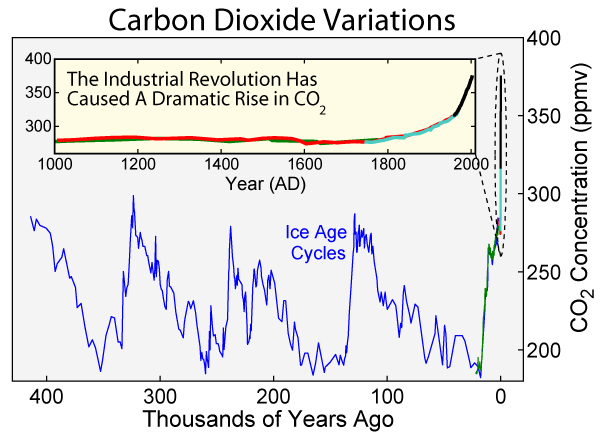Dealing With Global Warming

We have several options for dealing with the potential of increased global warming: prevention, clean-up, and political action. Prevention involves reducing the human activity that contributes greenhouse gases to the atmosphere, namely reducing carbon dioxide emissions, which have risen dramatically since the Industrial Revolution. Action items to prevent global warming include:
- cut fossil fuel use, especially coal—since this produces carbon dioxide, a major greenhouse gas
- improve energy efficiency—since this would mean using less energy and less coal in the first place
- use more renewable energy—such as wind power and solar power—as these do not rely on coal combustion
- reduce deforestation—cutting down forests removes plants, and plants remove carbon dioxide from the atmosphere through photosynthesis
- limit urban growth—this would mean reduced energy needs
The second way we can deal with global warming is to look for ways to prevent some of the carbon dioxide we produce from circulating in the atmosphere. This is called carbon sequestration. It involves capturing and storing the carbon dioxide that comes out of smokestacks and storing it in some other part of the environment. Carbon sequestration can involve burying carbon in deep rock formations, but this technology is still being researched.